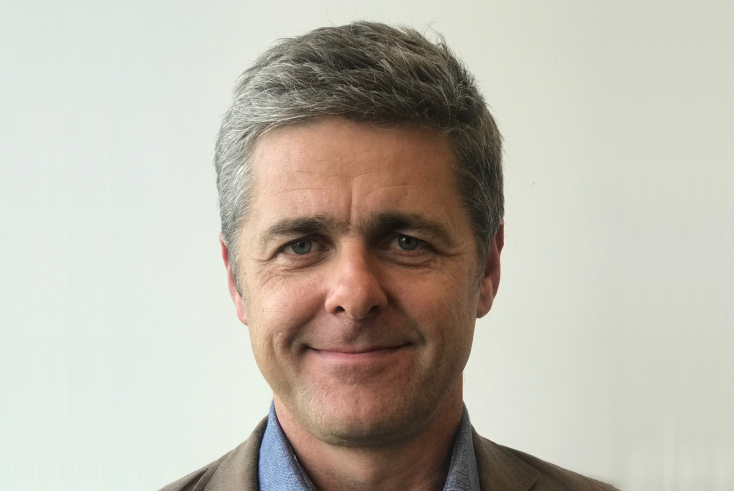Five questions with The Ozone Project’s Damon Reeve

The Ozone Project CEO addresses the ongoing battle between Google and the Australian Government, the long term impact of the ISBA/PwC report, and what he believes the future will look like for premium digital publishers
Hi Damon – what are you most looking forward to in the year ahead?
Overall, a sense of normality. Following the rollercoaster of last year, like most people, I was really looking forward to 2021. Then it arrived and hasn’t quite started as I had hoped!
It feels to me like we are now in a ‘steely determination’ phase, focusing on a point mid-year where (we hope) life returns to something more normal, and preparing for what I hope will be a really energetic business bounce-back in the second half of the year.
We’ve also seen significant expansion in the Ozone team across the past twelve months or so – in fact, we now have more people in our team that have joined virtually than who experienced the traditional office-based induction. I’m really looking forward to a time when I can properly meet each of our new faces in person, and catch up with those who were part of the team before the first lockdown.
What are your thoughts on the ongoing battle between Google and the Australian Government? What could it mean for news publishers in the UK?
The fact that there is not a credible search alternative to respond to Google’s threat of pulling out of the Australian market highlights the issue competition regulators have to deal with not only in Australia, but also in the UK, and it’s a tussle that is being closely watched by almost all advertising and publishing stakeholders.
Today, internet search is an intrinsic part of daily life. So is journalism. Google operates a monopoly in search in many major media markets around the world. The economic challenges facing journalism are due in large part to the control Google and Facebook have over how we consume our news, and news organisations not being fairly remunerated for the content they create.
It’s been 9 months now since the ISBA/PwC report revealed that 15% of programmatic supply chain costs were ‘unattributable’ and on average publishers only receive 51% of advertiser spend. Have your conversations with your partners and advertisers evolved or accelerated as a result?
The response from brands at the time the report was published was immediate – particularly those involved in the study – and the tone a mixture of frustration and embarrassment. Since then, and through that initial engagement, the immediacy appears to have ebbed slightly as brands realised the structural challenges required to effect sustained changes.
[advert position=”left”]
There are simple changes that can be implemented, such as engaging directly with publishers through transparent platforms like Ozone, that provide certainty that their budgets are spent in known and trusted, brand-safe environments.
Long-term change affects contracts and incentives in place with their agencies and partners, and the measures of success they have in their own marketing teams and wider businesses that encourage bad practice. These all need to be directly addressed for sustained change to be achieved.
The good news is that we’re seeing many more brands address this head on by playing a much more active role in their digital marketing planning.
What do you hope the future will look like for premium publishers?
The future for premium publishing is really exciting as marketing strategies shift from pure scale (quantity) to quality. Scale will still be important, but the programmatic system we have today values inventory not audience, which skews spend to the 40,000+ websites highlighted in the ISBA report and away from the trusted, brand-safe environments premium publishers offer.
In addition, we’ve seen the overuse of ‘ad-tech’ metrics as proxies for campaign success – metrics like clicks – that incentivise bad practices. But as the industry shines the spotlight on these issues and we move towards a programmatic system that better meets the needs of brands, and introduces measures of success based on metrics that drive brand and customer value, a much greater value will be placed on the engaged audiences and quality environments that premium publishers offer.
That’s why Ozone, as a publisher-owned business, is unashamedly advertiser-first; by delivering great solutions for brands, we allow our publishers to invest more in their reader strategies that ultimately create the audience relationships that the very same advertisers want to tap into. It’s a win/win situation.
What will be your biggest challenge this year as CEO of The Ozone Project?
Keeping Ozone on a straight road, managing growth by delivering increased value to brands and publishers, in a sector that is experiencing significant change, and has a tendency to want to pull in different directions. From targeting and data changes as a result of the end of the third party cookie, fresh engagement with regulators (ICO and CMA), and the unrelenting dominance of Google and Facebook, navigating the competing forces and turning risks into opportunities will keep me pretty busy!
On top of that, as announced at the end of last year, our publishers have scaled their investment in Ozone in order to accelerate our growth to meet advertiser demand. A significant part of that investment comes in the form of people, and we’ve been incredibly fortunate to also welcome some of the most brilliant talent from our publishers alongside our lockdown new starters.
Overall, we’re expecting to grow our team three-fold by December and I’m determined to make sure that as we grow, Ozone holds on to the values, passion and mindset that have been key to driving our success over the past few years.




